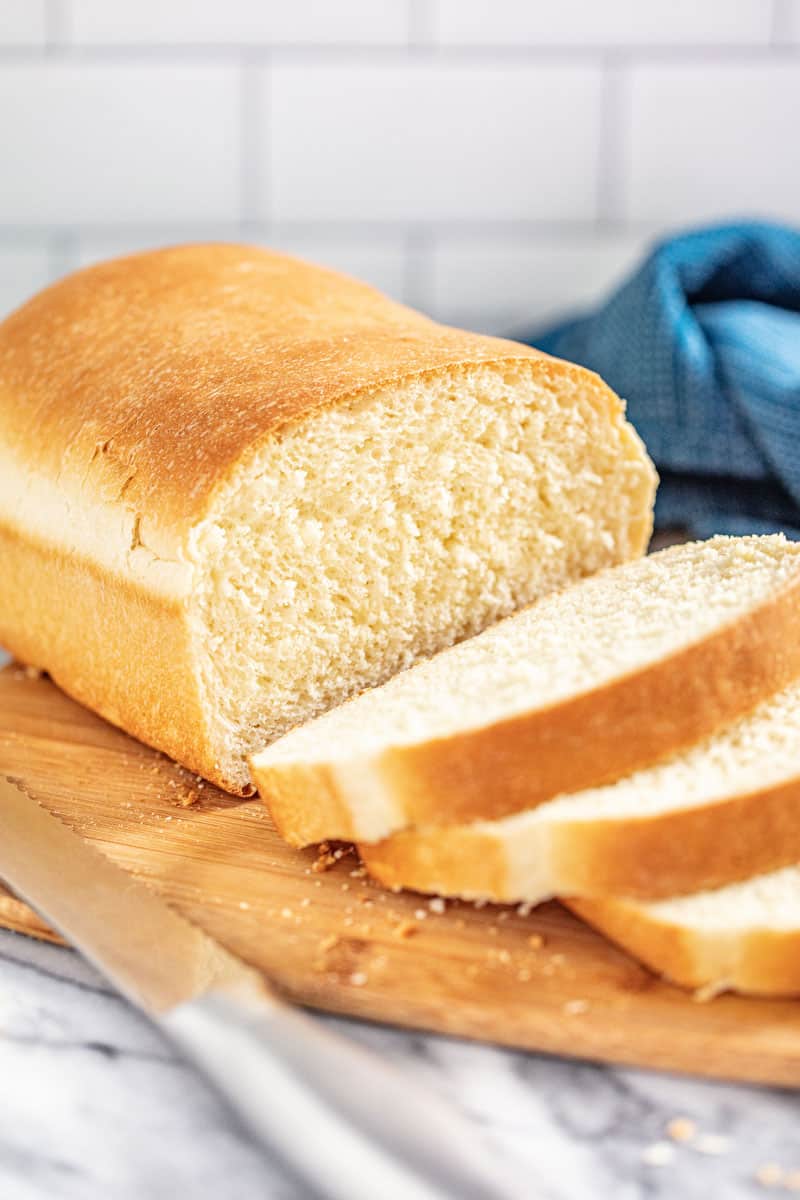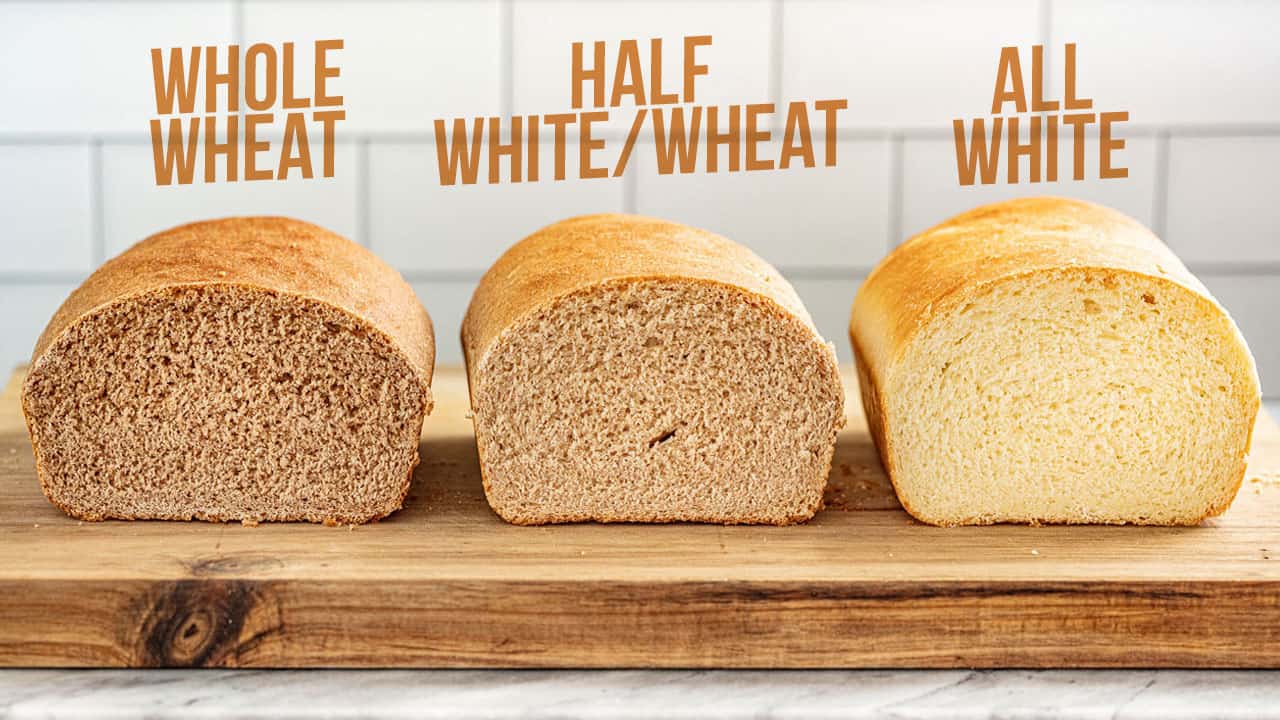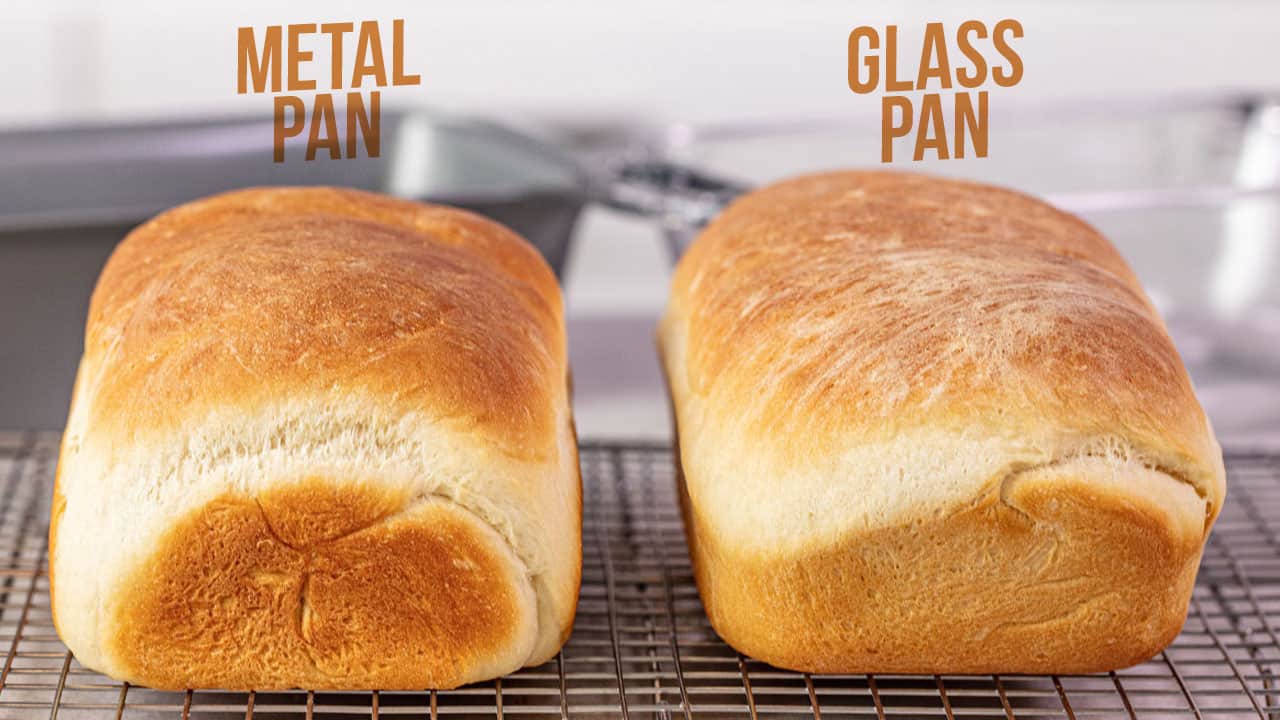The Ultimate Guide to Homemade Bread starts with a classic base recipe and then covers all of the common substitutions to guide you in customizing your bread to your own needs so you can create your own perfect loaf.

There is probably no smell on earth that is more inviting, comforting and symbolic of home than homemade bread. It is like a magnet for family and friends. Many of us have a recipe we’ve tried or one that has been passed down through family and friends. But making bread is also a science. There is a lot that goes into it and there are a lot of possible variations. We’ve included some of those here. After making many loaves of bread and trying many variations, the recipe we decided we like best for its taste and texture is made with milk instead of water, and requires very little kneading.
You will start by warming the milk in the microwave, and then combining that with all of the other ingredients in a stand mixer and letting it knead until a dough ball is formed. This only takes a couple minutes. That dough is placed in a greased bowl to rise for 90 minutes and then transferred to two greased bread pans to rise for another 60 minutes, then baked. You’re going to learn that the hardest part about this recipe is waiting to eat the bread!
SUBSTITUTION GUIDE
- Water vs. Milk
Milk changes bread recipes by producing a softer loaf, due to the milk fat content, which also gives bread a richer flavor. Bread made with milk browns more easily than bread made with water, as lactose or milk sugar will caramelize as it bakes. - Oil vs. Butter
Butter has a lower smoke point than oil, meaning it will brown before oil will when baked. While butter and oil are interchangeable in the same amount when making bread, using butter does produce a better flavor. - Honey vs. Sugar vs. Sugar Replacement
Honey and sugar are fairly interchangeable. You can replace sugar with honey in the same amount. Sugar replacements vary and usually come with instructions for substitution and what amounts to use. The kind of sweetener you use in making bread will alter the end result. Honey may add a floral element, depending on the source of your honey, while artificial sweeteners may add a metallic after taste. - Instant Dry Yeast vs. Active Dry Yeast
This recipe calls for Instant Dry Yeast which requires no proofing time. If you choose to use active dry yeast in this recipe you can do so in the same quantity and proof the yeast by adding it to the warm milk along with the sugar and letting this mixture sit for 5 to 10 minutes before proceeding with the recipe. - Wheat vs. White
Wheat flour is heavier and more coarse than white flour and will produce a more dense bread. You can use all wheat, a combination of half wheat and half white flour, or use all white flour. The results are pictured below.

-
What if I don’t have a stand mixer? Can I make homemade bread by hand?
You don’t need a stand mixer, you can knead this bread by hand. It is physically more work, but it doesn’t require a lot of kneading. You only need to knead the dough until all of the ingredients are combined and a dough ball forms that is smooth and elastic and slightly tacky to the touch.
-
Can I use this recipe in a bread machine?
Yes. This recipe will work great in a bread machine.
-
Should I use a glass bread pan or a metal bread pan? What is the difference?
Glass and metal conduct heat differently which means they bake bread differently too. A glass bread pan will produce a softer, less crispy crust. A metal bread pan, especially a darker metal bread pan, will produce a crispier crust that is darker brown in color. You can see the visual difference in the photo below with the loaf made in a metal pan on the left and the loaf made in a glass pan on the right.

If you’re looking for more bread recipes, here are some of our favorites:
- Best Homemade Dinner Rolls
- Homemade Rye Bread
- Easy Homemade Pita Bread
- Irish Soda Bread
- Garlic Parmesan Herb Bread
Watch the video below where Rachel will walk you through every step of this recipe. Sometimes it helps to have a visual, and we’ve always got you covered with our cooking show. You can find the complete collection of recipes on YouTube, Facebook Watch, or our Facebook Page, or right here on our website with their corresponding recipes.

I made this bread yesterday evening and had it this morning. The salt quantitative too much. I’m sorry, I questioned it at the time but told myself that it would’ve been caught by now if it were a problem.
I enjoy reviewing your blogs and occasionally finding something new to try.
This bread is my new favourite recipe. Thank you for sharing
This recipe.is very easy to !! I was thinking if I can use coconuts oil and coconut sugar? I would lovely bread to be coconutty!!! Also can use this dough and make this into cinnamon swirl bread?? Or what about fold in walnuts??
So many variation I have in mind!!!! So exciting!!!
Can you half the recipe for one loaf?
Yes you can. If you hover over where the serving size is a little slider will appear that you can adjust and it’ll automatically scale the recipe for you.
Thank you! That’s pretty cool.
I discovered this feature a few weeks ago while making french bread. SO handy!
I always find your recipes give the best taste to all food and dessert. Thank you for the recipe!
LOVE THIS RECIPE!! SIMPLE, CLEARLY PRESENTED ESPECIALLY FOR THOSE OF US WHO ARE NOVICE BREAD BAKERS. THANK YOU SO MUCH!!!!
Love it!!! So soft and delicious. Thank you
This recipe was amazing! This was my first time making yeast bread and this helped me a ton :^) The texture was amazing
This was my first time making bread so I followed the recipe exactly. The bread turned out wonderful! Everyone loved it! Thanks for video instructions they helped a lot!
Followed the recipe exactly and it came out awesome. One question, it was a little salty, is there any reason for that amount and would it be ok if next time we did 1/2 tablespoon of salt?
We’ve found that everyone has a slightly different preference on how much salt to add to bread. You can certainly use less if you found it to be too much for you!